General
Ideas of Political Reform Mooted in June 2009: Dilute the Asokan Model – by Michael Roberts
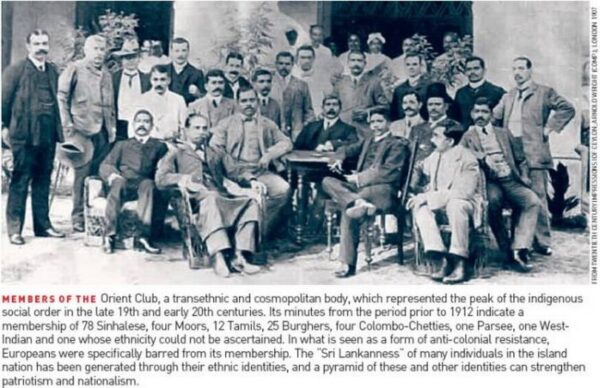

Source:thuppahis.com
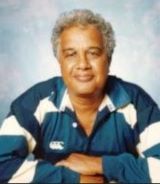

Michael Roberts, in the cover story in FRONTLINE, 19 June 2009, where the title reads “Some pillars for Lanka’s future”
One can win the War, but lose the Peace. A cliche this may be, but it is also a hoary truism that looms over the post-war scenario in Sri Lanka. The triumphant Sri Lankan government now has to address the human terrain rather than the fields of battle.
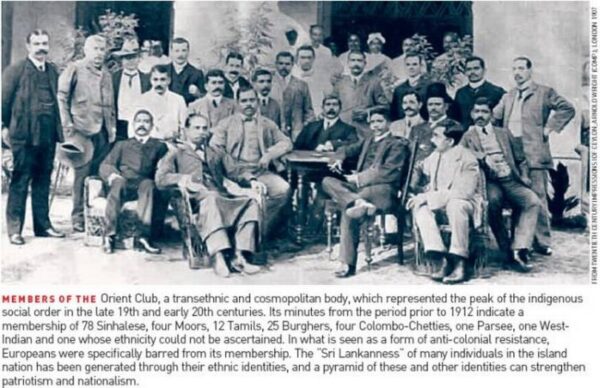

In facing this challenge, both government and people concerned must attend to another truism: as Sinnappah Arasaratnam pointed out long ago, extremisms have been feeding off each other and undermining political compromise in Sri Lanka over a long period of time. Now, apart from the well-known Sinhala chauvinist forces outside and within the Rajapaksa government, we must attend to the Tamil chauvinist forces in the Tamil National Alliance (TNA) and elsewhere in Sri Lanka, in Tamil Nadu and in the ranks of the vociferous Sri Lankan Tamil diaspora across the world. These forces have to be undermined.
This is not an easy task. It calls for a multistranded strategy involving many moderate forces. One element is already in place: thanks to the initiatives of the Ministry of Constitutional Affairs under Dew Gunasekera, Tamil has been made a compulsory subject at school in the Sinhala-speaking areas since mid-2007; and proficiency exams have been introduced at various levels of the public service that give incentives to those with bilingual capacity. It remains to be seen whether these steps on paper reach deep and become implanted as effective practice.
All observers are wondering if President Mahinda Rajapaksas sweet words will be matched by substantive political reforms that institutionalise devolution and reach out to Sri Lankan Tamil hearts and minds. When some three lakhs of Tamils in the northern Wanni chose in the course of 2008 to move east with the retreating LTTE forces, they did so because they distrusted the government and believed the LTTE was their protector. So, Rajapaksas advisers have to ask two related questions. How was this so? And why are the Tamil peoples, including many in the Jaffna peninsula and in Colombo district, so alienated and distrustful of the present regime (and past regimes)?
In addressing this issue, they must thank the Tigers for their parting gift. By turning draconian around January 2009 and holding roughly three lakh Tamils in bondage, to use D.B.S. Jeyarajs term, until it eased constraints on the remaining 50,000 on May 10 , the LTTE alienated most of these people sometimes to the point of virulent opposition.
But the feeling of bitterness extends beyond the LTTE. I do not know the purpose of my life. I wonder why and for what the LTTE and the military fought the battle and what was achieved in the end. We believe the Tigers, Sri Lanka government and Indian people with whom we share a special bond are all responsible for our fate today, said 67-year-old Aryanathan, when he was interviewed at Manik Farm Zone IV by a group of foreign journalists (The Hindu, May 27 ). Aryanathan spoke in English and presented this view as a distilled statement embodying the views of some 21 internally displaced people (IDP) assembled at one spot.
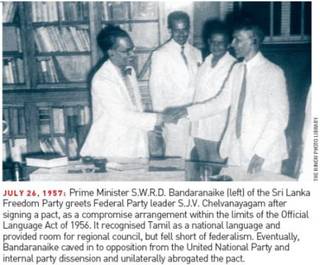

The Hindu Photo Library
Subject to the caveats encoded within Aryanathans statement, the feelings of the Tamil refugees towards the LTTE represent a reality check to the Tamil communalists in Lanka and abroad who are marooned in their very own island of rage and fantasia. The sentiments of such Tamil IDPs are also a potential boon for the government of Sri Lanka. But will the government demolish this opportunity by being too draconian in its treatment of the IDPs in what are effectively internment camps rather than welfare centres? Screening the IDPs is certainly called for and de-mining is an essential operation in the war-ravaged terrain of their old villages, but military adjutants who bark orders will undermine the political project of the government. The administrators, whether military or civilian, must be individuals with a humane touch. Their rule must also be transparent and marked by the registration of all IDPs.
While the Tamil IDPs are an immediate issue, the long-term question of constitutional reform cannot be postponed. The draft Constitution of 2000 is widely regarded as a good foundation which constitutional experts can build on for this purpose.
But these experts should be ready to think outside the box and go beyond the 13th Amendment; and to insert some measures of asymmetrical devolution within these plans.
Suppose, then, that by some work of genius a wonderful new constitutional scheme of power-sharing is worked out and put in place. Will it last? Can it work? I foresee two major problems that will undermine this project, problems that have in fact undermined the working of democratic institutions in Sri Lanka for six decades. In a nutshell these are: 1. the overwhelming concentration of power in the Presidents office in the De Gaulle Constitution set up by J.R. Jayewardene in 1977 with advice from Professor A.J. Wilson; and 2. anti-democratic practices in electoral processes and party organisation that are of endemic character. Both these facets are sustained by a set of cultural practices that I have described as the Asokan Persona in the course of four essays in Exploring Confrontation (Reading: Harwood and Delhi: Navrang, 1994).
The Big Man (invariably male) has to control every fiddling little thing. It is a deeply-rooted cultural tendency towards the over-concentration of power at the head of organisations and a failure (if not an ingrained inability) to delegate power.
Apart from generating administrative bottlenecks, such practices sustain a top-down flow of authority in ways that stifle initiative among higher-level and middle-level officers. This strand of interpersonal organisational practice, in turn, is shored up in Asias hierarchical context by cultural practices that encourage subordinates to kow-tow (significantly a Chinese word incorporated into English) to superiors in ways that encourage them to think themselves God-Almighty. This tendency is accentuated by standard practices associated with ministers of state at public functions: the ministerial or presidential persona is always pirivaragena, surrounded by an entourage (or preceded by beeping security cars on road).
The concept of pirivaragena is deeply etched within Sinhalese thinking: images of the Buddha are surrounded by disciples and followers in many temple wall-paintings; and it is known that chiefly journeys in Sinhalese kingdoms past were invariably pirivaragena.
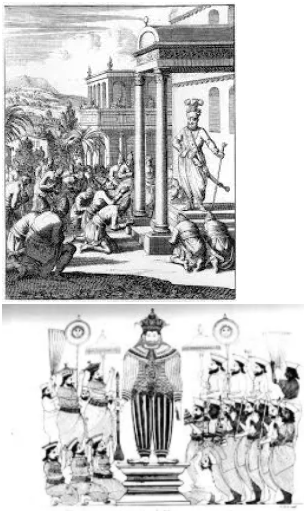

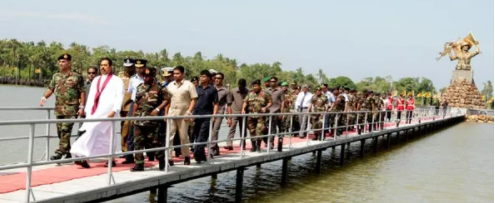

Where such practices pertain to the head of state, that is to President or Prime Minister, the Asokan Persona has one additional ingredient denied to, say, a head of department. At the apex, the persona not only embodies concentrated power with all the force of legitimised authority, but is also vested with the aura of sacredness. In brief, the position combines the roles of Pope and King (or Queen) with an Asian twist. Righteousness envelopes the person and his (her) acts. It follows that challenges from below are likely to be deemed to be unrighteous (or unpatriotic), a form of heresy.
One does not need to be a Newton to conclude that what the Sri Lankan President gives as constitutional gift, he can withdraw too. Or his successor can. Ergo, it follows that constitutional transformation must also curtail the existing presidential powers. Is this likely? The short answer is: rivers do not flow backwards. In effect, any scheme of reform is vulnerable and on shifting sand.
Add to this the character of the two main parties: the Sri Lanka Freedom Party and the United National Party. Neither have internal democracy. Worse still, whispers from around suggest that elections in the past decade or so have been widely marked by intimidation, vote-rigging, denial of voting rights by clerical acts and all manner of chicanery. If these tales are valid, once we set them within the context of over-centralised organisational practices of the Asokan type, what we have in Sri Lanka is a form of democracy that is riddled with caverns and dungeons. Such concerns aside, many have welcomed the Presidents parliamentary address on May 19. His symbolic deployment of a few sentences in Tamil was, indeed, as innovative as welcome. His dismissal of ethnic identity as irrelevant was also applauded widely.
This assertion was concomitant with an emphasis on the overwhelming importance of two categories of being in Sri Lanka: those patriotic (rata adhara karana aya) and those unpatriotic (rata adhara nokarana aya). Rata adhara nokarana aya was used in the sense of un-Sri Lankan that is, in the manner of un-American in Yankee-speech. For this reason, it is feasible to interpret the argument in dark ways as a warning to critics of the government.
I prefer, here, to dwell on the benign reading of this viewpoint as a rejection of the pertinence of ethnic identity and thus of ethnic differentiation. But I do so in order to argue that such a contention is beset with pitfalls and lacks substance.
For one, the Presidents stirring message was (and continues to be) contradicted by popular depictions of the triumphant war as a re-enactment of the Dutugemunu Elara episode in Sri Lankas history, a trope now for indelible Sinhala-Tamil conflict. The President himself catered to this understanding by garlanding a statue of Dutugemunu a few days later.


As problematically, at the celebration honouring the war heroes on May 22, the President spoke of the jatika kodiya, sinha kodiya (national flag, Sinha flag) in the same breath. In this critical conceptualisation, a part of Sri Lanka, the Sinhalese people, is equated with the whole of Lanka. This ideological act of merger is presented in taken-for-granted manner, thus, insidiously and powerfully.
Let me clarify the relationship of part to whole via a comparative excursion that addresses the relationship between the concepts England and Britain and thus English and British. Let me focus on this issue over the long period, 1688 to 1945, a period when the British Empire was built up and sustained.
England was the central force in the regional and institutional complex that came to be known eventually as Great Britain. In the result it was common in the 19th and 20th centuries for Englishpersons to use the terms English and British as synonyms. I have evidence of General Hay MacDowall doing the same thing unthinkingly as he sat atop Kandy in 1803. Since the Scots and the Welsh benefited immensely from British strength and expansion, it would seem that they went along with the taken-for-granted hegemony of England within Britain. Thus, while roaming in the imperial gloaming some Scots accepted English dominance until recent decades when their nationalism has sharpened and taught new generations of English persons not to equate England with Britain.
I shall return to this facet, the incorporation of whole by part, within the Sinhala mindset at the concluding moment in my essay. But I must also explain why the President’s benign emphasis is impractical and lacking in substance. This calls for an excursion into the foundations of ethnic identity and patriotism, a complex subject that can only be clarified incompletely in a brief comment.
Endowed with speech and memory, human beings classify the world around them. Vernacular language schemes develop in the course of human interactions with different others in contiguous space. These relationships are inter-subjective and self-referential. Labels define Us in distinction from named Others. Though boundaries are not watertight and few peoples are totally homogeneous, the transgression of boundaries, say, by boy-girl affairs, sometimes generates an emphasis on the sanctity or worth of a group. Needless to say, the cluster of factors and practices that sustain the boundaries of named groups over an extended period of time can vary from place to place and, in any specific case, can alter over time.
Family and familiar locality is often of central significance in the nourishment of loyalty to group and its associated territorial space. Thus, in most instances a Sri Lankans patriotism to his island entity is built upon local experiences and sentimentalities. I conjecture that President Rajapaksas Sri Lankan patriotism is founded upon his love for his gama (village) and his pride in being a Ruhunu kollek (a lad from the Ruhunu south). To erase such pillars and familiar roots in any individuals memory bank is both impractical and silly. Likewise, one must allow for the fact that among many individuals their Sri Lankan-ness has been generated through their ethnic identity as Burgher, Malay, Sinhalese, Tamil, and so on. In other words, a pyramid of ethnic and other identities can strengthen patriotism and nationalism.
The Sri Lankan cricket team in the 1940s onwards was bolstered by the likes of a Sathasivam, a Heyn or a Coomaraswamy. When Sri Lanka faced Tamil Nadu (or Madras Cricket Association) for the Gopalan Trophy from the early 1950s, the Tamils of Sri Lanka faced up to the Other as sturdy Ceylonese to a man. The tragedy of Sri Lankas history is that so many Sri Lankan Tamil patriots of yesteryear were led (for reasons I cannot tackle here) to discard their Lankan-ness and adopt a separatist Eelam identity or to discard their island roots altogether.
On these solid grounds of sociological theory, therefore, I assert that Sri Lanka today has to recognise that its patriotic identity of Sri Lankan must be built upon a confederative principle that recognises the existence of several communities as well as three nations within the entity Lanka (Ceylon). The three nations are the Sinhalese, Tamils and Muslims. The communities are the Malays, Burghers, indigenous Vaddas, Colombo Chetties, Borahs, Sindhis, Parsees and Memons.
For this pyramid of loyalties and sentiments to be sustained, it is imperative that the Sinhalese-Sri Lankan equation must be undermined and split asunder(witness the manner in which the English-British equation has disintegrated in the last 40 years). A scheme of constitutional devolution directed by goals of appeasement is obviously vital to such a process. But my argument here points to the vital need for ideological work that seeks to undermine the hegemonic swallowing of the Sri Lankan whole by its Sinhalese part.
This is not an easy task. Constitutional fiat cannot transform minds, especially entrenched mindsets. Categorical subjectivity is a hard nut to crack. Multiple strategies are required. Let me suggest one that is designed to work over two generations.
Briefly, my intent is to develop hyphenated categories of self-identity. By that I mean such labels as Italian-Australian and Greek-Australian, labels that are deployed in Australia both as self-referential terms and as pertinent descriptions of third persons.
Towards this end, I would like to see the process of creating identity cards and driving licences and organising census enumeration in terms that have it as said that all citizens are Sri Lankan; and, within that premise, forms should have separate boxes with the following categories for each person to tick (or have ticked): Vadda Lankan, Sinhalese Lankan, Burgher Lankan, Borah Lankan, Sindhi Lankan, Tamil Lankan, Parsee Lankan, Malay Lankan, Colombo-Chetty Lankan and, last but not least, Samkara Lankan (mixed descent).
The Samkara Lankan category is particularly important. For one, it is a step that gives equal place to matrilineal ancestry and thus enhances womens rights. For another, it will register the important phenomenon of hybridity that is otherwise lost in the political weight carried by census enumeration. There are a significant number of Sinhalese-Tamil marriages even today, especially in Colombo district and in the low-country plantations districts; taken together with the mixes between other communities, it would not surprise me if the category Samkara amounts to anything between 7 and 10 per cent of the total population of Sri Lanka. If this conjecture is valid, then the Tamils, Muslims, Samkara and other tiny communities will add up to almost 30 per cent of the total population.
But the point of this proposal is not primarily devoted towards marking and assessing relative demographic clout (the census is not politically-neutral). The goal is to reform and transform the categories of self-identity so that hyphenated thought takes root and destroys the insidious incorporation of the whole, Sri Lanka, by the majoritarian dominant part, Sinhalese. My suggestion is quite fundamental. It will call for political imagination for the rulers of the land to accept it.
******








